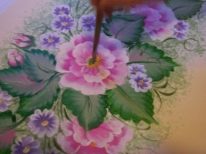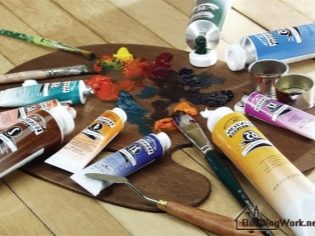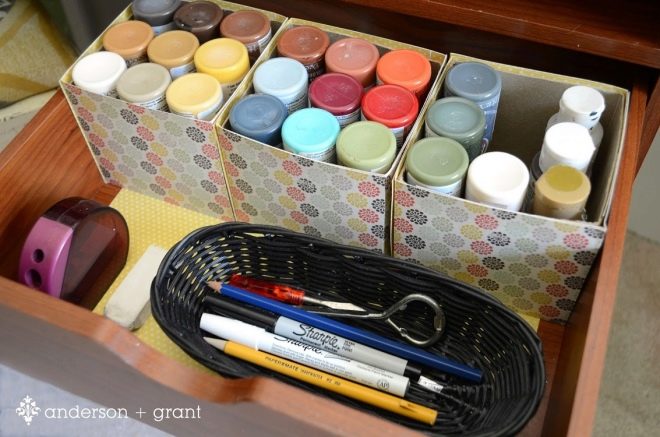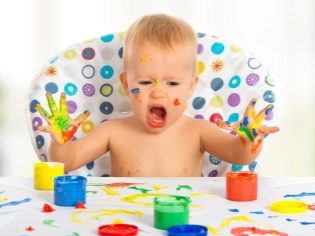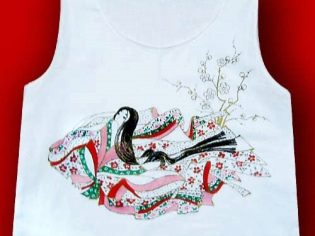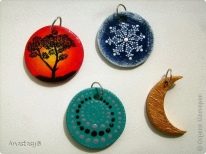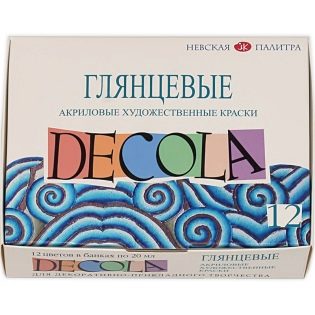Acrylic paints for drawing: features of choice
A few generations ago, painting with colors was by no means an ordinary hobby, and although many could afford such an occupation, they had to choose - drawing or basic human needs. Today, such a choice in front of a modern person is not worth it - he can afford a lot.
For children, this hobby is very useful. Moreover, children draw necessarily - it happens within the framework of common development in kindergarten and in school. If a child takes the hobby seriously, he needs special accessories. In this article we will discuss what to consider when choosing acrylic paints.
What it is?
In most cases, paint is a substance with a complex chemical composition that not only contains the pigment of the desired color, but also allows it to paint on the surface of other objects, and also contributes to the long-term preservation of the result.
Modern artists, as well as people of other professions, at least approximately versed in the subject, tend to believe that acrylic paints today are in many ways superior to most of their "classical" competitors.
Left by them drawing is very elastic and allows for the possibility of bending the base, does not crack, holds onto the surface well. He is not afraid of changes in temperature or humidity, even exposure to sunlight has no particular effect.
Each type of paint, in addition to other characteristics, also differs in composition. Acrylic paints are different in that their base is polyacrylates, the use of which to create intelligent dyes has become possible only recently. It is the presence of this component that makes acrylic-based paints special.
For example, such a chemical formula contributes to a wide range of applications of acrylic-based paints. They do not provide their owner with any restrictions on the basis on which they will be used - such material can be painted on absolutely any surface.
If we talk about "adult" use, then it is usually limited to very practical purposes - it is this type of paint that is painted on most products.
Children have a great need for creativity and self-expression. For them, the main thing is the ability to paint any surface, which allows them not to limit themselves in the choice of suitable materials.
Specifications
Acrylic paints have certain qualities that significantly distinguish them from any other analogues. First of all, it is a composition that includes polyacrylates, painting any surface. The basis is ordinary water, which makes the paint liquid, and drying, allows it to harden.
Accordingly, the most primitive water-based acrylic paint washed off with ordinary water, but only until the polymerization of acrylic takes place - then it will cover the drawing with a thin waterproof layer, and will not let moisture through, and will not succumb to most types of solvents.
Pigments are far from the only component of the coloring mixture, because acrylic, in particular, is present in it - the same one that is used for nail extension. Its huge plus is that it is capable of hardening quite quickly, creating a solid waterproof surface, but at the same time being transparent.
In other words, the emulsion of this type, drying out, does not change the original shade of the dye - it remains the same as at the time of drawing.
In brief, all the main characteristics of acrylic paints can be described by the following points:
- High-quality acrylic paint is much better resistant to moisture than most major competitors. In the "adult" application, it was she who became the main paint for sanitary facilities, as well as for those products whose main scope of application involves constant outdoor use. Nevertheless, such quality is useful for children's creativity as well - at least, the kid's masterpiece will last longer.
- Acrylic paints are very easily applied to almost any surface and adhere to them qualitatively. The viscosity of such paint is also high enough so that the object painted by it dries completely in a matter of hours. Again, first of all, this fact is used by adults who simply could not assess this characteristic with an eye to the benefit of repair, however, in painting these qualities will be very practical.
- The composition of acrylic paints allows you to experiment with the appearance of the dye after its application to the surface. For example, its properties can be significantly expanded if added to a mixture of optical dyes — then products that look completely normal in daylight will glow in the dark.
Naturally, any shade from the purchased set mixes well with other colors from it, which allows you to create your own palette, instead of looking for the perfect option in stores. In this case, the fixation of color does not occur at the same moment, that is, for some time the shades will still allow further mixing.
So the masters use this knowledge for their own purposes, drawing the necessary directly on the canvas - or, in order not to interfere with the process, wait at least an hour until the previously applied drawing cures.
If we talk about the kind of acrylic paints that are intended for children's creativity, then it is usually sold in sets, by analogy with any other children's paints - in a relatively small amount.
Knowledgeable people advise in the case of large-scale enthusiasm for painting and this type of dye for the sake of economy, to buy more volumetric quantities of paints at a time - in particular, they are sold in jars of even 220 ml.
Kinds
What else is good paint on acrylic base, so it is its diversity. The widest choice of various additives allows you to transmit almost any visual effect.
First of all, artistic acrylic paint for painting is matte and semi-gloss.
Everything is simple here - the first is the most consistent with the concept of "anti-glare", while the second is the opposite - it can shimmer in different shades and shine in a dried form, which is especially appropriate for the image of objects that are also in reality.
In addition, there are completely liquid acrylic paints and thicker, which provides varying degrees of adhesion with certain materials, allows you to choose the best method of drying, for example, evaporation of water or its absorption into the base.
Since many species contain an acrylic polymer base, which then hardens and becomes transparent, it is not surprising that the finished result has its own distinct texturedifferent from paint to paint.
Textured paint in this case is not just used as a necessity - it is selected taking into account the fact that it more faithfully conveys the features of the drawing.
Such a structural surface is selected, as a rule, by trial and error, since no one can accurately describe in advance exactly what the final result will be.Texture paint for the needs of children is used less often, because it turns out to be difficult for kids to choose it on their own.
To start a serious drawing class, a child needs a large set of acrylic paints. For example, for minimal needs, a child should purchase a set of at least 12 colors. When buying a 6 color baby is unlikely to appreciate all the benefits of just such a material.
24 colors will already be able to fully open the palette, but only sets of 40 colors and above will be appreciated by those children who have sufficiently developed hands and mental activity to create true masterpieces. Here, most likely, matte and glossy versions of colors will be combined, the presence and color of different colors is possible.
In addition, fluorescent hues that glow in the dark can be included in the set, and if in the real artistic world this is hardly in demand, then this opportunity will help children create a real fairy tale that they will appreciate.
Color palette
In any set there should be all the basic colors, but a good artist should be able to choose not just the color, but also independently create from the available colors those shades that would perfectly accurately convey his idea.
In sets of acrylic paints, diversity is often achieved through a mix of matte and gloss, as well as the presence or absence of a glow in the dark.
If the desired shade, which is somewhat different from the main tone, is not found even in a rather impressive set, it doesn't matter, just learn how to combine what you have on hand:
- Gold paint is obtained by adding a minimal amount of red or brown to the base yellow. It is very close to it and golden - it uses brighter shades of yellow.
- The mother-of-pearl detail of the pattern is drawn with the help of white and black with a small amount of blue and / or green.
- Silver paint, or simply "silver", is made by gradually mixing to white black in small quantities - until the result is not satisfied with the artist. The silver mixture, the purpose of which is to depict this particular precious metal, ideally should be with sparkles. Approximately the same pattern is made and ivory, but it needs strictly matte paint.
- The red color palette is very wide. Most often, an ordinary red color from the set is simply lightened by adding a certain amount of white tone there, but it is possible to additionally “warm up” the shade by adding yellow. The so-called royal red color is a combination of classic red and blue. The color gamut will be incomplete if it does not feature pink dye - it is made from white dye with a slight mixing of red.
- Bronze is another popular "non-standard" color in painting. Bronze detail is drawn through the yellow pigment, richly diluted with red, blue and white patches. Unusually, for a brighter contrast, the dosage is not increased by an additional color, but by the main, that is, yellow.
- The green gamma is another color that is of fundamental importance for children's creativity. The pale version is obtained even without the use of green - yellow paint is made more “deep” with the help of blue or black. Turquoise paint, so necessary to paint the sea - the product of mixing green and blue.
Grass color is obtained by mixing yellow with small portions of green and blue.
How to use?
Acrylic paint in the store is usually sold fairly thick - so conscientious suppliers provide the consumer with a sufficient amount of paint with a relatively small container.At the same time, this means that the young artist will have to independently dilute the raw material, which, however, can also be used for artistic purposes, because then you can influence the thickness of the mixture, and, consequently, the specificity of its absorption into the canvas.
In general, most acrylic paints contain water - it is the liquid base for the dye, so the master can easily make a lot thinner by simply adding water. However, true professionals rarely do this preferring to use a special thinner - usually with its help regulate the haze or shine of the dried surface.
Since acrylic paints themselves already suggest the presence after drying of a solid polymer layer on the surface, usually the drawings do not need to be varnished - they are already properly protected. It is noted that a completely frozen polymer, as a rule, does not take almost any solvent, so the creation process on the same layer will have to be limited in time, although if necessary, the masterpiece can be further drawn and then simply added to a new level.
Acrylic paints are also good because they practically do not imply restrictions on the surfaces on which they can be used. It is possible to draw such a mass not only on paper, but also on wood or fabric, and even on walls or glass, if you are not afraid to entrust the creation of the design of its room to your own child.
At the same time, it is necessary to take care of the storage of paints, because they are unlikely to deteriorate completely, but may force the owner to spend extra money on returning the form suitable for drawing to them again.
The fact is that this type of paint dries quite easily in the open air. You can try to return it to its original consistency with a special solvent.
Experienced artists advise to always have on hand such a tool, and even better - do not forget to periodically sprinkle paint with ordinary water.
Scope of application
The ability of acrylic paints to adhere well to a wide variety of surfaces is highly appreciated by masters of applied art, and this material, of course, is also suitable for children's creativity.
Most often, children are offered to paint with such paints on paper - then their use is not radically different from gouaches or watercolors, although the result looks somewhat unusual. At the same time there are no special requirements for the type of paper - Acrylates bond well with cheap drawing albums and are great for canvas.
If we continue the theme of children's creativity, then we cannot ignore the theme of decoupage, which in this case represents a somewhat complicated version of the application, which is simply applied to the bulk surface.
Acrylic paints are easy to apply and leave a bright, expressive mark on the surface of fabric, wood, foam, and many other common materials that can be cut to decorate any objects.
A very special creative combination is a combination of polymer clay and acrylic paint. Clay of this type is generally very popular lately - so much so that it already seems to be starting to gradually push out the classic clay from the developmental process of children.
The figures of this material have been criticized for a long time for the fact that they look too gray and boring as for small children, and it is not possible to paint them normally with the help of the usual watercolors and gouaches. It is acrylic paint with its amazing adhesive properties that can best paint such a surface and ensure that it does not begin to fade or peel off over time.
At the same time, this coating also performs the function of protection against moisture, which is a very important factor for such a complex craft.
Manufacturers
Quite a lot of different companies around the world are engaged in the production of acrylic paints, but experts say that choosing the best is objectively impossible - in this situation, much depends on personal preferences and perception of each person.
In our country, both leading foreign brands with an international name and domestic products enjoy success.
Perhaps you should briefly describe the most common models.
"Sonnet"
Suitable for all surfaces and is considered a versatile option. It is popular with creative people, because it sells a dozen colors for drawing (and a few hundred rubles each), while larger individual tubes are also produced for painting one-tone handicrafts.
"DECOLA"
It is worth a couple of hundred rubles cheaper than the Sonnet, but also suitable for all types of surfaces, and it also offers a wider palette of colors.
In general, the sets here are limited to only 6-12 shades, but the total choice is much wider, because the manufacturer produces cheaper gloss and more expensive "metallic" paint.
"Ray"
One of the most recognizable Russian brands of products for creativity, but in general they are not praised so often.
Typical for this manufacturer is the release of goods in sets of 12 jars at the price of up to 400 rubles.
"Gamma"
“Gammu” is considered the main competitor of “Ray”, and in the field of acrylic paints this brand is the most popular. The products of this brand are considered to be the most multidirectional, since they allow solving problems of any level - from amateurish “daub” to completely professional painting.
Although the scope is still quite broad, reviews indicate that this mass is best suited for painting on the wall and not too good for accurate drawing of small parts. At the same time, one tube of such paint, albeit rather large, costs from one to two hundred rubles.
"Ladoga"
Another universal manufacturer, producing sets of 8 to 12 colors, and he comes across quite large containers - up to 100 ml. This brand has the most suitable products for those children who have not yet decided on their love for drawing - here parents will be able to get a lot of raw materials for a creative search of a kid for very little money.
An important plus is the fact that, in general, the range of shades of acrylic paints from this company reaches 51 pieces.
How to choose?
It is not for nothing that paints are sold both in sets and separately - this allows you to choose them for people of different levels of drawing skill.
For those who are only looking for themselves in the world of creativity, it is better to buy large sets so that they have no shortage of anything, but the masters mostly mix shades for themselves, or choose the right individual jar themselves.
For children it is better to choose only really high-quality product.
Acrylic paints should be safe. Manufacturers on their products must indicate the composition - there should not be anything such whose presence you do not understand. If you do not know what the ingredient means, ask the seller about it.
A strong unpleasant odor or unrealistic acidic shades may indicate that the manufacturer has included some particularly corrosive, harmful chemistry that provokes evaporation and may cause an allergic reaction in a child.
Theoretically, even such paints can be used for children's creativity, but then increased safety measures are needed when working with them, and children, as is well known, rarely observe them.
Acrylic paints are the types of goods that will be wrong to buy in reserve, as they dry out pretty quickly. Therefore, if drawing is not a kid’s everyday hobby, it’s better not to buy big jars.
Be sure to look at the expiration date, and ideally look inside the jar. Quality product must be quite liquid, but improper storage can ruin a product by turning it into an inappropriate solid state for use. A low temperature may cause the paint to exfoliate, or flakes form in it.
How to draw sunflowers with acrylic, see the next video.



















